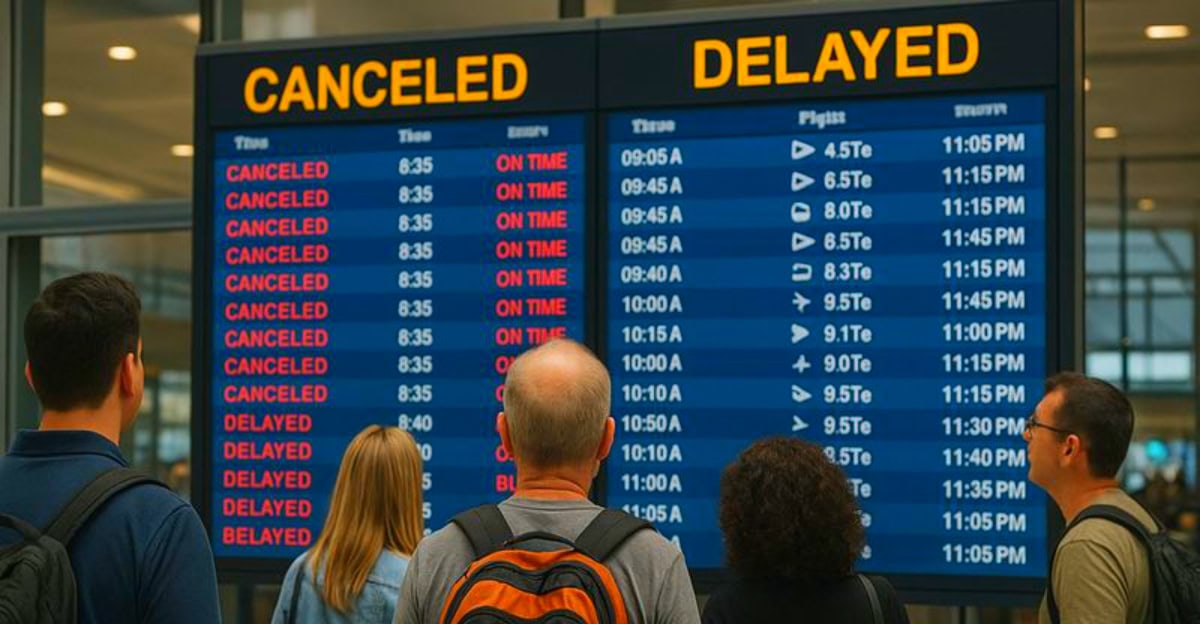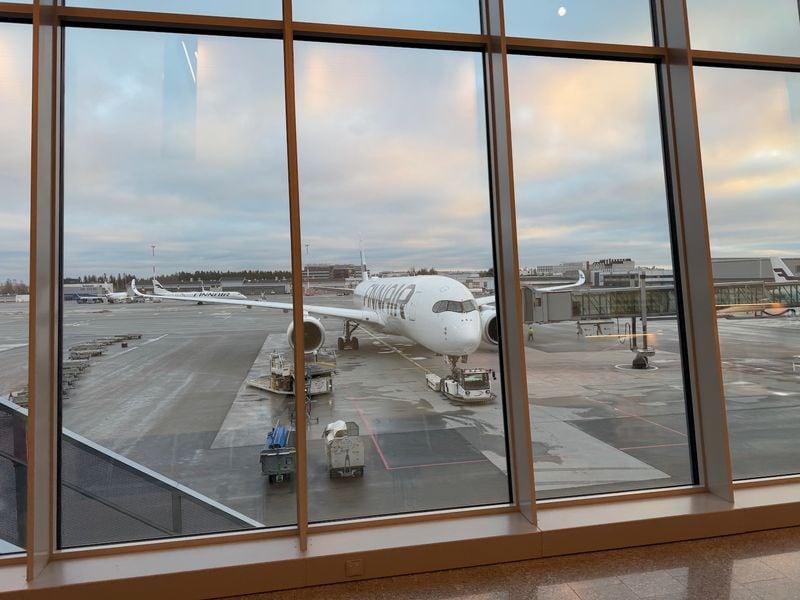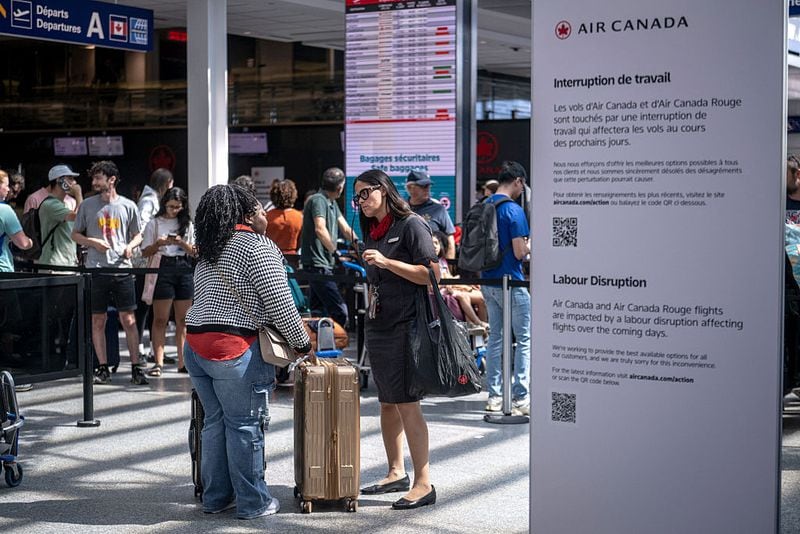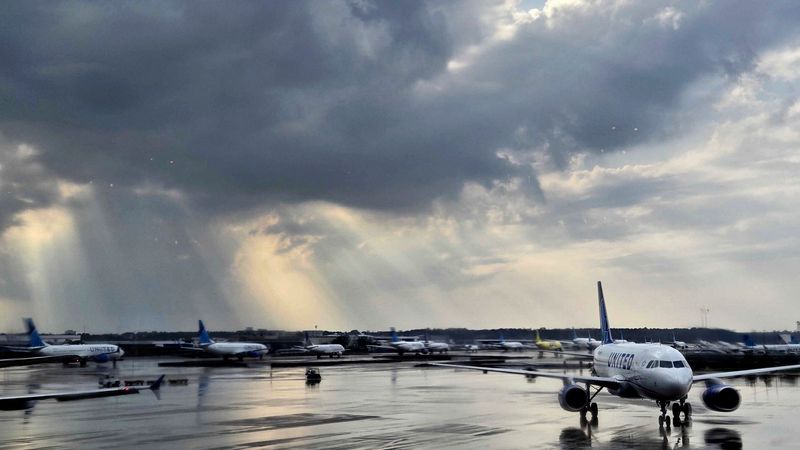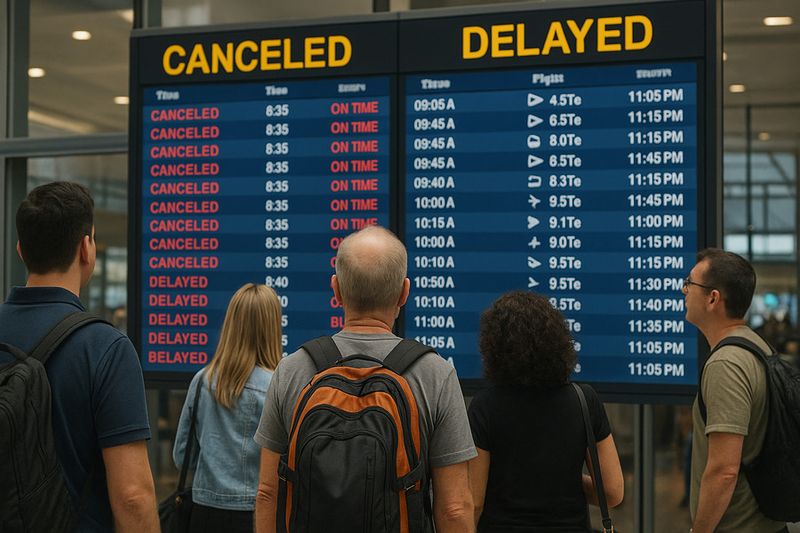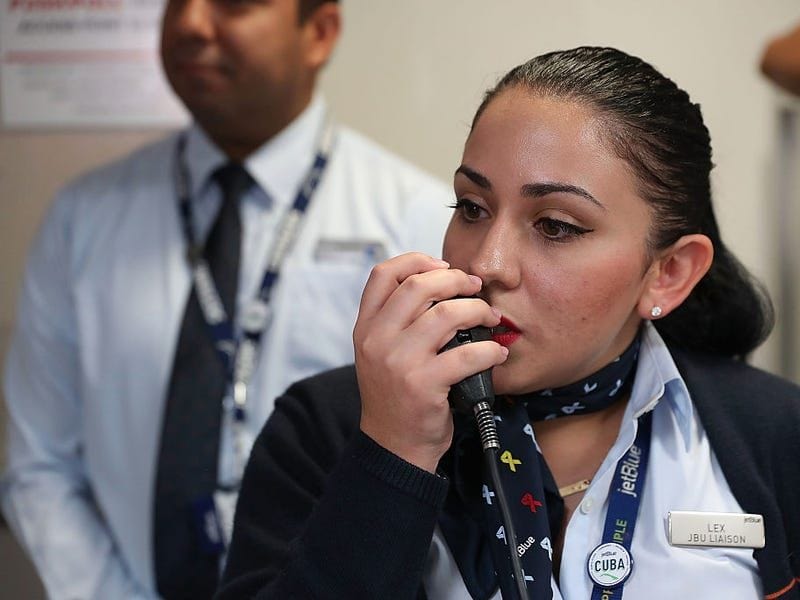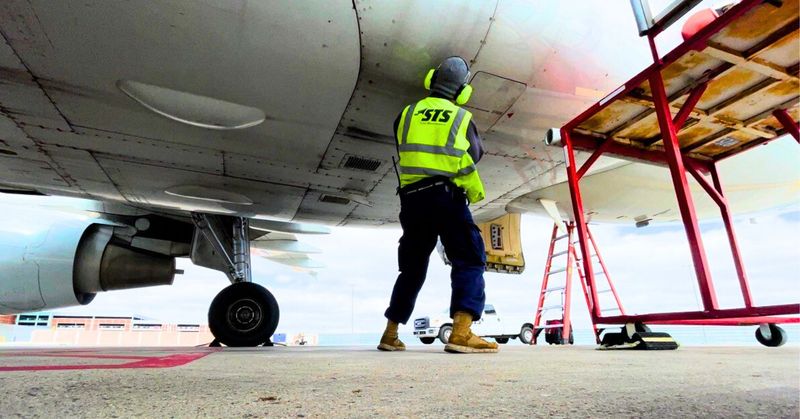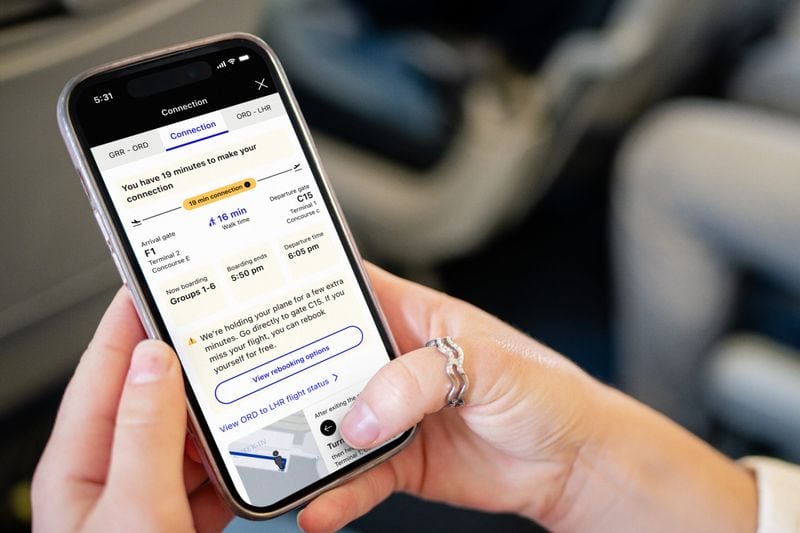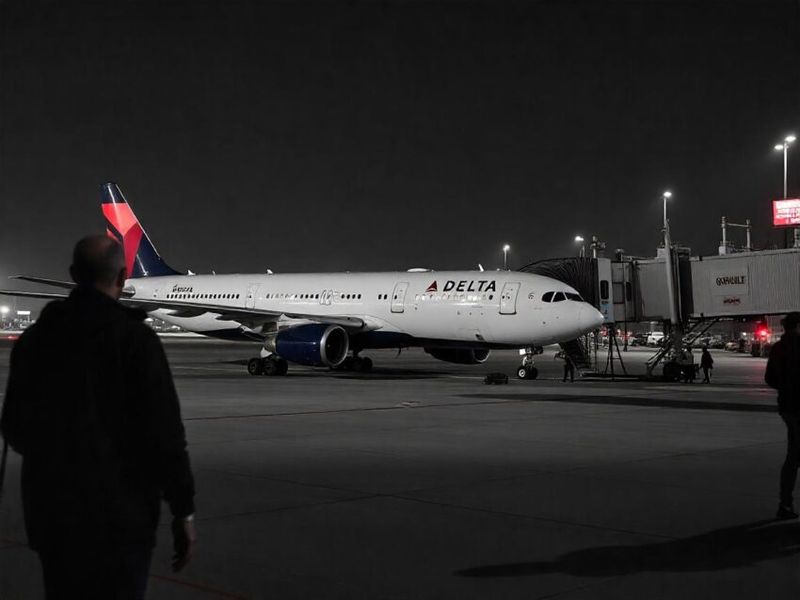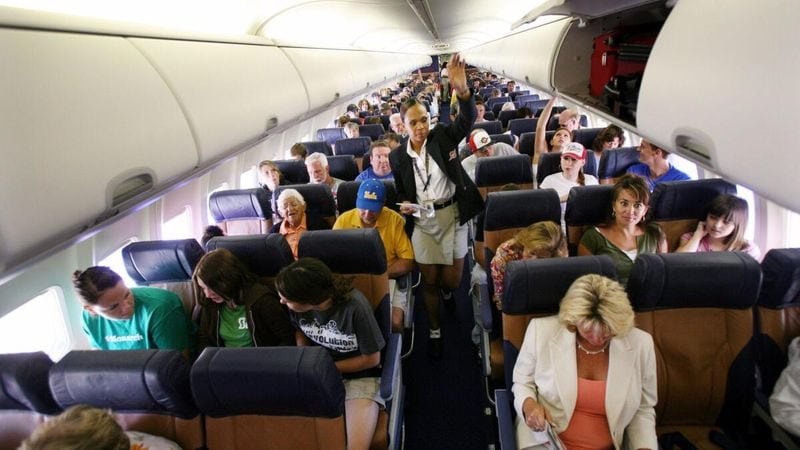Nobody wants to spend hours stuck at the airport wondering when their plane will finally take off. Smart travelers know that certain clues can help predict flight problems before they become official announcements. Spotting these warning signs early gives you time to make backup plans, grab a meal, or even rebook onto a different flight.
1. Your Plane Hasn’t Arrived Yet
Airlines operate on incredibly tight schedules, with planes often having just 30-45 minutes between landing and their next departure. When you arrive at your gate and see an empty jetway, that’s your first red flag.
Most aircraft fly multiple routes daily, so delays create a domino effect throughout the system. A storm in Chicago can delay your evening flight from Miami because your plane is still stuck on the tarmac hundreds of miles away.
Gate agents usually know about incoming aircraft delays before passengers do, so don’t hesitate to ask politely about your plane’s current location and expected arrival time.
2. Crew Members Are Missing
Federal aviation regulations are strict about crew requirements – every flight needs a specific number of qualified pilots and flight attendants to operate safely. Missing even one crew member can ground an entire aircraft.
Flight crews often work multiple flights per day, traveling between different cities on tight schedules. When their previous flight gets delayed, it creates a cascading effect that impacts every subsequent departure they’re assigned to work.
Listen for announcements mentioning “crew delays” or “awaiting flight crew,” and watch for airline staff making phone calls while looking stressed. Airlines sometimes need to fly replacement crew members from other cities, which can add hours to your delay.
3. Weather Issues at Distant Airports
Experienced travelers know that bad weather doesn’t have to be at your airport to affect your flight. Modern aviation operates as an interconnected network, where problems in one city ripple across the entire system.
Your sunny departure city means nothing if thunderstorms are pounding your destination or if your aircraft’s previous stop is experiencing a blizzard. Airlines also consider weather along the entire flight path, not just the endpoints.
Major hub airports like Atlanta, Chicago, or Denver handle hundreds of connecting flights daily. When weather shuts down these hubs, it affects flights nationwide, even those that aren’t directly flying through the affected area.
4. Multiple Flights Show Delays
Smart passengers always check the departure board for patterns before panicking about their individual flight. When multiple airlines show delays to similar destinations, it usually indicates larger systemic issues beyond any single carrier’s control.
Air traffic control manages airplane flow across entire regions, and they’ll hold departures when destination airports become overcrowded. Ground stops can affect dozens of flights simultaneously, creating those dreaded walls of red “DELAYED” messages on departure boards.
Regional weather patterns, air traffic control staffing issues, or major airport equipment failures can create widespread delays. If you see this pattern emerging, start making contingency plans immediately rather than waiting for your specific gate announcement.
5. Vague Gate Announcements
Gate agents typically provide specific reasons for delays when they have concrete information. Vague announcements like “slight delay” or “updated departure time” without explanations often mean the airline is still figuring out the problem.
Airlines prefer to give incremental delays rather than announce a massive delay all at once. They might push your departure back by 30 minutes three different times instead of immediately announcing a two-hour delay.
This strategy keeps passengers from rebooking on competitors, but it’s also a sign that the underlying issue is more complex than initially anticipated. When announcements become repetitive or increasingly vague, prepare for a longer wait than originally indicated.
6. Maintenance Activity at Your Gate
Seeing maintenance crews with toolboxes, diagnostic equipment, or replacement parts around your aircraft is never a good sign for on-time departure. While safety always comes first, mechanical issues can range from quick fixes to major problems requiring aircraft swaps.
Maintenance teams work systematically through checklists, and they can’t be rushed. Simple issues like replacing a light bulb might take 30 minutes, while hydraulic problems could ground the plane for hours or even force a cancellation.
Airlines keep spare aircraft at major hubs, but smaller airports might not have immediate replacements available. Watch for how long maintenance crews stay busy and whether they start bringing larger equipment or calling for additional personnel.
7. App Updates Before Announcements
Modern airline apps connect directly to operational systems, often updating flight status faster than gate agents can make announcements. Savvy travelers refresh their apps frequently to catch changes before they become public knowledge.
Airlines update internal systems first, then communicate with airport staff, and finally make passenger announcements. This process can take 15-30 minutes, giving app-watching passengers advance warning about delays, gate changes, or equipment swaps.
Look for subtle status changes like “awaiting aircraft,” “crew scheduling,” or “air traffic control delay.” These technical descriptions often appear in apps before simplified announcements reach the gate area, giving you extra time to make alternative arrangements or find better seating.
8. Late Evening Departure Times
Aircraft and crew scheduling problems accumulate throughout the day like a snowball rolling downhill. That 8 PM departure is much more vulnerable to delays than the 7 AM flight using the same plane and crew.
Airlines build minimal buffer time into their schedules to maximize aircraft utilization. A 15-minute morning delay becomes 30 minutes by afternoon and two hours by evening as problems compound through multiple flight segments.
Many airports also have noise restrictions or curfews for late-night operations. If delays push your departure past these cutoff times, airlines might cancel the flight entirely rather than pay hefty fines or deal with community complaints about nighttime noise.
9. Unusual Passenger Loads
Airlines constantly juggle passenger loads to maximize profitability, and flights with very few or too many passengers face different delay risks. Severely underbooked flights, especially on regional routes, might get canceled so the airline can consolidate passengers onto other departures.
Overbooked flights create their own delays as gate agents spend time seeking volunteers to give up seats, processing rebooking paperwork, and handling upset passengers. This process can easily add 30-60 minutes to departure times.
Holiday periods and weather disruptions create unusual booking patterns that stress airline systems. Pay attention to how full your gate area looks compared to the aircraft size, and listen for any announcements about seat availability or passenger accommodations.
10. Security and Boarding Delays
Airlines sometimes hold flights when large groups of passengers are stuck in security lines or when many connecting passengers are delayed from other flights. This is especially common at hub airports during peak travel periods.
TSA checkpoint delays can back up for hours during busy times, and airlines track how many of their passengers are still in security queues. They’ll often delay departure by 15-30 minutes rather than leave behind dozens of ticketed passengers.
Boarding delays without clear explanations might indicate the airline is waiting for connecting passengers, dealing with oversized baggage issues, or managing air traffic control restrictions. These operational holds can quickly snowball into longer delays as airports become more congested throughout the day.
